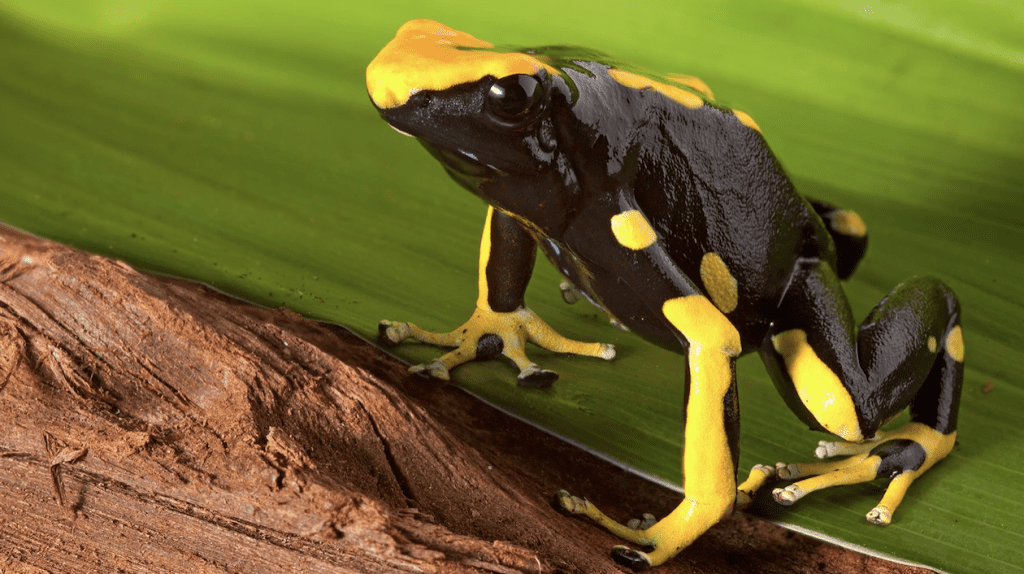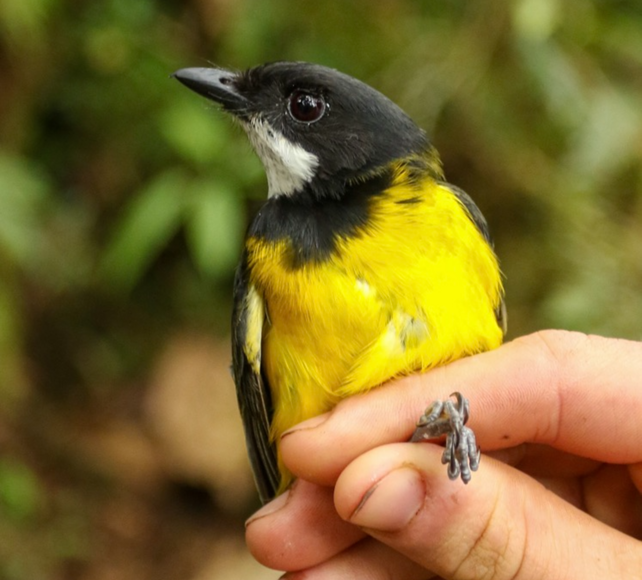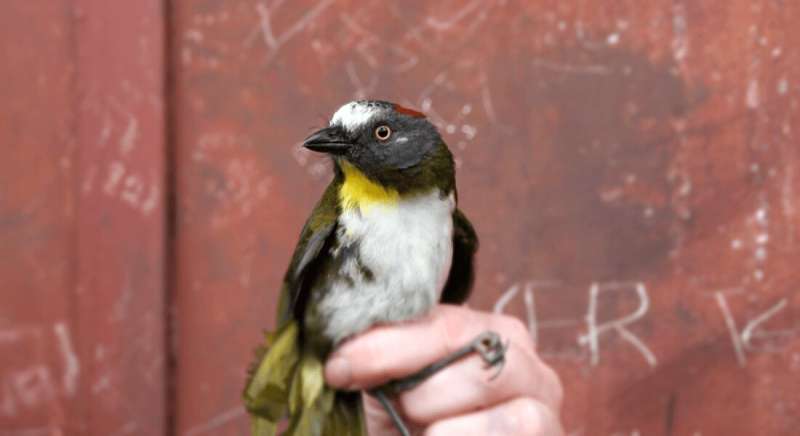Poison Dart Birds?: Scientists Discover Two News Bird Species in Papua New Guinea and They’re Both Poisonous

(EnviroNews World News) — Two new species of poisonous bird have been identified in the rainforests of Papua New Guinea. Scientists from the Natural History Museum of Denmark made the startling discovery during a recent expedition to the mountainous jungle region of the Saruwaged Range.
The team of researchers caught and analysed a regent whistler (Pachycephala schlegelii) and rufous-naped bellbird (Aleadryas rufinucha) and found poison in their skin and feathers. The scientists say it is likely these chemicals were converted from toxins found in the beetles they eat.
The museum’s evolutionary ecologist, Knud Jønsson, told Earth.com:
These birds contain a neurotoxin that they can both tolerate and store in their feathers. We were really surprised to find these birds to be poisonous as no new poisonous bird species had been discovered in over two decades. Particularly, because these two bird species are so common in this part of the world.
The discovery suggests the compound batrachotoxin – a steroidal alkaloid which can cause severe muscle cramps — is more widespread in nature than originally thought. Up until now, this particular neurotoxin was most commonly found in South America’s legendary poison dart frogs. Now scientists are wondering whether the chemical could be present among more of the world’s birdlife.
While poison dart frogs, such as the strawberry poison frog (Oophaga pumilio) and the yellow-banded poison dart frog (Dendrobates leucomelas), use their toxins to deter predators, it is not yet clear exactly how birds use it to their advantage. Thus far, there is nothing to indicate they are venomous because they cannot deliberately deliver poison to prey or predators via bites or stings. But considering the lethal power of batrachotoxins, a person certainly wouldn’t want to eat one.

Jønsson told Phys.Org:
The locals aren’t fond of spicy food and steer clear of these birds, because, according to them, their meat burns in the mouth like chili. In fact, that’s how researchers first became aware of them. And the toxin can be felt when holding onto one of them. It feels kind of unpleasant, and hanging on to one for long isn’t an appealing option.
It is highly likely the birds, just like the frogs, have evolved to deter predators from attacking them. While the level of toxicity is thought to be lower than that found in frogs, it could still prove lethal to humans if delivered into the bloodstream.
Project ecologist Kasun Bodawatta described to Fox 6 News how he suffered from the poison first-hand:
By forcing sodium channels in skeletal muscle tissue to remain open, (the neurotoxin) can cause violent convulsions and ultimately death. Knud [Jønsson] thought I was sad and having a rough time on the trip when they found me with a runny nose and tears in my eyes. In fact, I was just sitting there taking feather samples from a Pitohui, one of the most poisonous birds on the planet. It’s a bit like cutting onions – but with a nerve agent, I guess.
While it seems these birds absorb the toxins from beetles rather than producing them internally like snakes, the obvious question is: how do the birds not poison themselves?

The probable answer is a genetic mutation, similar to poison dart frogs which, over time, has allowed them to block toxins from affecting their sodium channels. However, Bodawatta and his colleagues believe that while the birds have mutated it is “not in the exact same places or genes as the frogs.” In other words, the birds are developing their own genetics to improve their chances of survival in what researchers label an “ever-lasting evolutionary arms race.” Insects at the bottom of the food chain develop toxicity or a bright colour to avoid being eaten which allows them to venture from beneath rocks and logs. Over time, predators counter with their own evolution which protects them from their prey’s toxins and opens up a whole new food source which is unavailable to rivals.

Bodawatta explained to Phys.Org:
One day the beetles will need to crawl back under that rock again until they’ve developed their next move a few million years later. Subsequently, the birds that have evolved the ability to eat toxic food, themselves become toxic and may be able to defend themselves against predators further up the food chain. And so, the race continues up the chain. It’s evolution — anything can happen, but it often takes a long time.
Genetics and evolution aside, how else can this discovery help? The museum suspects the breakthrough may prove useful to humans. Perhaps we can learn from the way birds have adapted to toxins in their bodies to help people suffering from, say, food poisoning.
Jønsson told Earth.com:
Obviously, we are in no position to claim that this research has uncovered the holy grail of shellfish poisoning, but as far as basic research, it is a small piece of a puzzle that can help explain how these toxins work in cells and in the body and how the bodies of certain animals have evolved to tolerate them.
More generally, the find helps paint a picture of wildlife in the southwest Pacific and around the globe. Until this project took place it was thought only three of our planet’s birds – all from New Guinea – carried toxins in their bodies. The hooded pitohui (Pitohui dichrous), variable pitohui (Pitohui kirhocephalus) and blue-capped ifrit (Ifrita kowaldi) may have been flying the flag for our toxic feathered friends until now. But now the wily whistler and a baneful bellbird are part of the club.
FILM AND ARTICLE CREDITS
- Dan Keel - Journalist, Author


![Leading the Charge for America’s Wild Horses on Capitol Hill: NBA/NFL Celeb. Bonnie-Jill Laflin: ‘[Politics] won’t stop us from fighting’](https://cf-images.us-east-1.prod.boltdns.net/v1/static/1927032138001/f46b2158-cead-47f0-ab44-4b027059411a/4e4afcf2-937d-4a9d-acba-1b82e2efd4c6/160x90/match/image.jpg)


